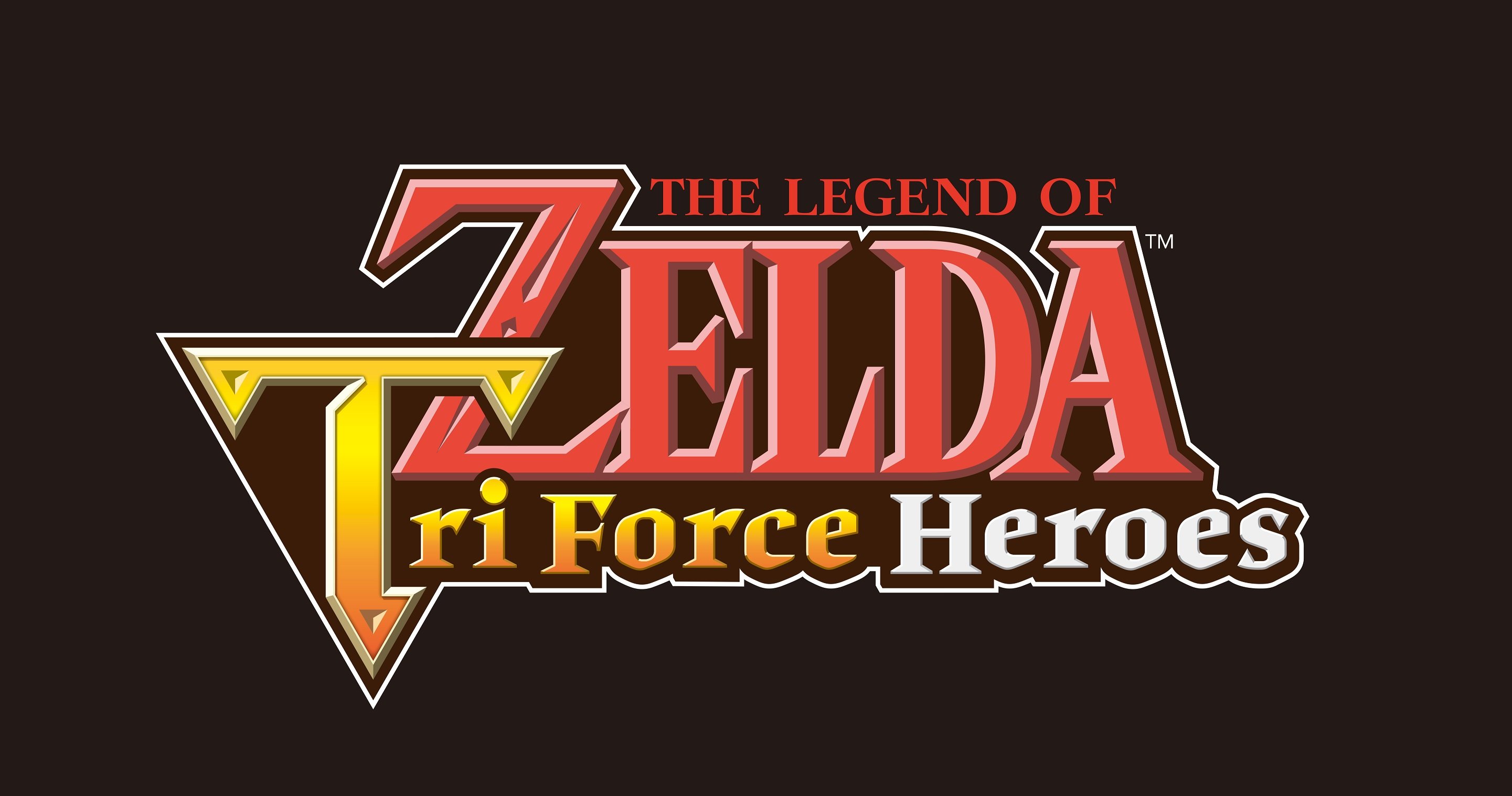An experience so nice, they named it with a three right in the title.
I honestly don't know if there's ever been a bad portable version of the Legend of Zelda series. Sure, on consoles there have been some that divided the fanbase—arguments about which is better, Majora's Mask or Ocarina of Time, or even which is worse between the three (THREE!) CD-i Zelda games. But the portable games, which surely have fans of certain games over others, have all been generally above average. And now, we receive another of the "side quest" kinds of games, where apparently Zelda's safe and some other princess needs less-dramatic help and the world is otherwise fine.
And you know what that means: FASHION PARTY!
Princess Styla of Hytopia was once not only a loving young woman, but a fashion icon for the kingdom as well. But then, a witch cursed her by putting her into a black skintight unitard and cursed her so she couldn't wear anything fashionable. In response, the kingdom began the search for the perfect young hero to save her: According to the sign, that means "pointy ears, truly epic sideburns, and side-parted hair." And so, no matter how he got to town, Link finds himself another mission bringing him into the depths of volcanoes, fortresses, and woodlands that have been his bread and butter since 1986 in the Drablands, where the monsters apparently don’t dress themselves very well.
This isn't an exploration and adventure title. This is a three-player (even without three actual players) puzzle game close in playing style to Four Swords, only now stacking is the answer to all issues. As such, nearly every puzzle (which is pretty much every stage) takes into account the ability to stack up either two or three Links tall, then using an item provided by the stage to move an object from point A to point B. There are eight environments in all, each with four levels to play through, which include four stages per level. That's… I'm a writer, not a math guy, but it's a lot of gameplay. Each stage is either a series of related puzzles or a boss fight, and they range from the wickedly easy to the hair-pulling-until-the-trick-is-discovered aggravating.
When playing solo, you control any of the three different-colored Doppels, all of which are in play throughout every stage and can be switched to in order to complete puzzles and fight. In all stages, this means you have to be mindful of where each one is, because while they don't take damage when they're not controlled, if they fall into lava or off the side of the world, that will take some life away. Solo, this isn't usually much of a problem, unless you love running around stacked three-high and jumping off cliffs into bottomless pits and then you'll be gone faster than an unprepared Ninja Warrior contestant. There often is a need to hold up at least one character for one reason or another, with some enemies just stacked taller than others, or a boss fight that requires a high stuff attack only to be thrown to the ground to wail with your sword.
There are plenty of items to use here too. Much of Link's previous inventory is available throughout the game, from the boomerang and hookshot to the magic hammer, and are used pretty much how you expect them to be used. As those items are provided at the beginning of each set of four stages there isn't any carry-over in inventory for later, so the puzzles stay interesting. But with most of the items being repeats, you get a grasp on how to utilize them early, and as a result some of the later puzzles feel much too easy. I would have liked more of a challenge than, say, simply turning off the juice and having to light torches dropped around the floor nearer the endgame, but it’s a minor gripe. Especially when each environment has its own unique grouping of dangers—quicksand, waterfalls, slippery ice, that sort of stuff. Lots of bottomless pits. You’d think there’d be an investigation to the amount of bottomless pits.
As I mentioned before though, the bosses can be aggravating. Some don’t feel entirely fair, even when you’ve figured out their patterns, so while they might require a nap or putting the game down for the next day at a certain point (I knew I had to, some made my temper start boiling over) they’re not terrifically difficult in the long run. Shifting platforms, inescapable falls, “blowback” attacks that might not harm your active character but can blow one of your others off a cliff—it can grind nerves. And this is not specific for every boss, either; even later in the game, bosses can be criminally easy, and only require maybe two of the three Doppels/other players. But that might be because they’re designed for three players, so they have to be nerfed I guess for single play.
The real meat and potatoes is the multiplayer, and having to wrangle cats with newbies is where it’s at. I wasn’t able to play much online, but the time I did I had a stable connection. Local co-op with a single cartridge is an option, which is great for a reviewer like myself without three copies of the game. Each player selects an environment and set of stages to play, but the downside is you’re likely to play through the early levels often since the cart-lacking player can only choose from a select group of levels, and after everyone has chosen, the level is picked via roulette. Sure, you might get help on that tricky Fortress stage, but you might have to just play in the Woodlands a ninth time before that happens. But at least you can select to play through them with challenges the next time—pop all the balloons, a life handicap, time limits, or any of the three challenges specific to that level.
After playing with yourself (hurr hurr), if you get bored playing the co-op with your friends, you can always just beat the hell out of each other. There’s a Colosseum option in addition to the co-op, playable with either two or three players (everybody needs their own copy, though), and you all can select a playfield which includes a unique weapon for each player and they can wail on each other to win prizes. You earn points by doing damage and by defeating environmental dangers, but there’s no options for time limit or anything else. It feels tacked on, which considering the rest of the game is slightly surprising. But Smash Bros. or any other fighter, this ain’t. If there was the possibility of tapping more than three players per fight, that would be ideal… with more opponents that could fill up a larger environment, and with multiple different items (and maybe dropping your collected item, either when defeated or not, to change things up) would have been more appealing.
And when prepping for stages, fashion is important: Materials like shells and blobs can be taken to the tailor’s shop for new outfits with unique properties. Dressing in Goron Garb gives some immunity to fire, Kokiri Clothes allow for multiple arrows to be fired in a spread, and the Legendary Dress increases the drop rate for hearts. That’s right, folks. In case you actually thought Link was Zelda before, now you can dress Link up as Zelda. And for tough fights where you think you’ll need the hearts boost, dressing as the princess is actually a useful option. Other outfits allow for bigger bombs, collecting more Rupees, but really… dressing like Zelda is where it’s at.
Actually controlling any of the various Links is exactly as you would expect from playing other top-down LoZ games going back to the classic Link to the Past, and that formula is tweaked perfectly for Triforce Heroes. Running, spin-attacking, using items—everything functions as it should with a single button press, and it’s easy to keep the basic controls straight.
The only odd out is using the in-game picture system when venturing into the Drablands. Every location can have a picture taken (up to 100 pictures can be saved, but only one per outing actually is saved), and it’s the last picture you decide to take, so you can’t take a bunch of possibly cool shots of your adventure and select the best one or anything. Plus, in the early goings when you’re familiarizing yourself with the controls, it’s easy to accidentally take a picture instead of using an item, and that picture could be the only one you even remember to take. It’s not otherwise a noteworthy feature—you take a snapshot and you can view the album from the camera store in town, and that’s it. You can share a message to Miiverse with a photo you’ve taken, but that’s all.
The series hasn’t had many disappointments in its history (*cough*WanoGamlon*cough*… sorry, I meant to say The Wand of Gamelon) and Triforce Heroes certainly isn’t one of them. It looks fantastic, it plays exactly how it should, and there’s plenty of both material and challenges to keep playing for a long time. The Colosseum might be underwhelming, and the picture-taking stuff is basic, but the rest is damn fun. Now all I need are friends… *sniffle*
-
Looks and plays like top-down Zelda (like the greats before it)
-
Three-player co-op is easy, even with only one copy of the game
-
It’s worth unlocking additional outfits
-
A bit on the easy side overall
-
Colosseum is incredibly basic
-
I knew it! Link IS Zelda!
legend-of-zelda-tri-force-heroes
-
legend-of-zelda-tri-force-heroes #1
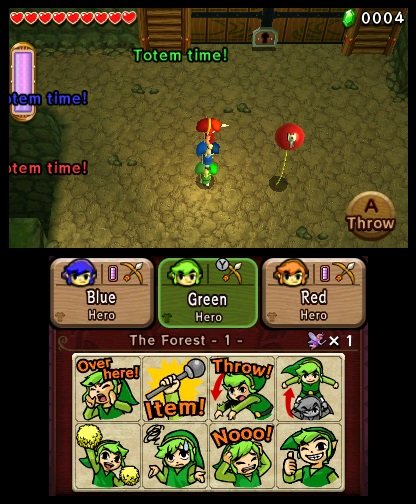
-
legend-of-zelda-tri-force-heroes #2

-
legend-of-zelda-tri-force-heroes #3
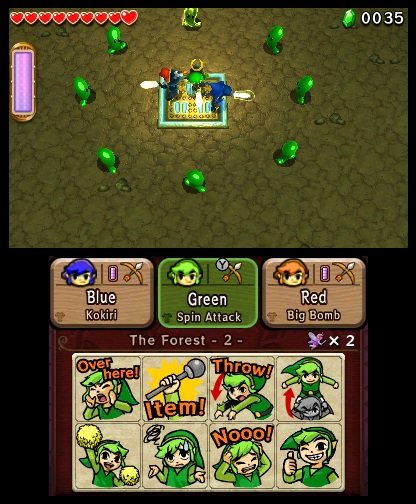
-
legend-of-zelda-tri-force-heroes #4
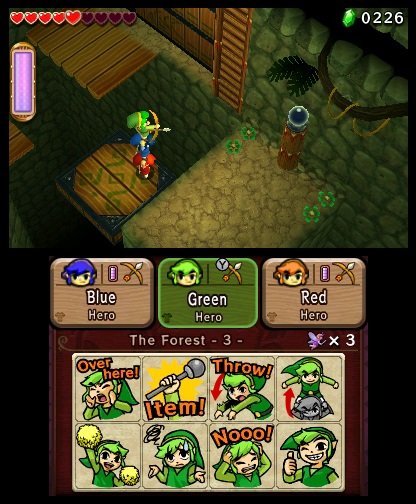
-
legend-of-zelda-tri-force-heroes #5

-
legend-of-zelda-tri-force-heroes #6
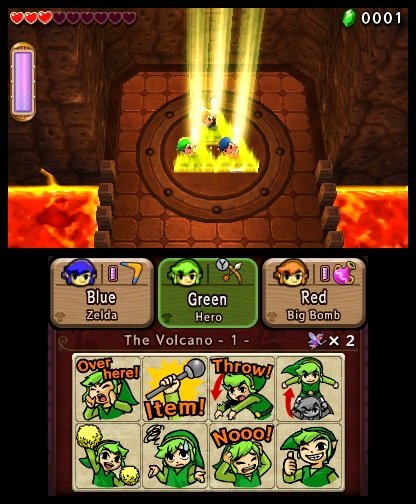
-
legend-of-zelda-tri-force-heroes #7
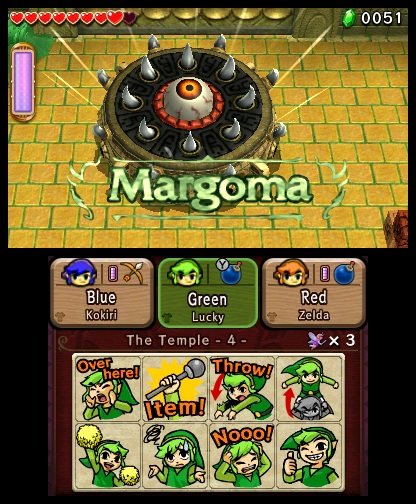
-
legend-of-zelda-tri-force-heroes #8
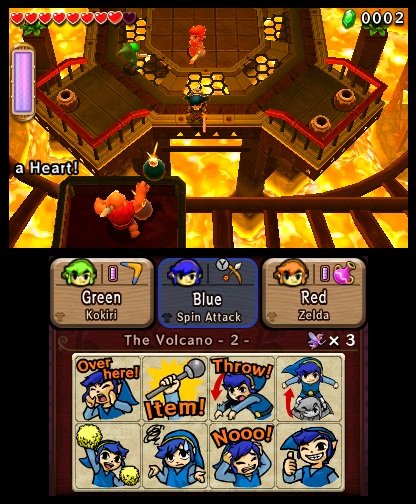
-
legend-of-zelda-tri-force-heroes #9

-
legend-of-zelda-tri-force-heroes #10
